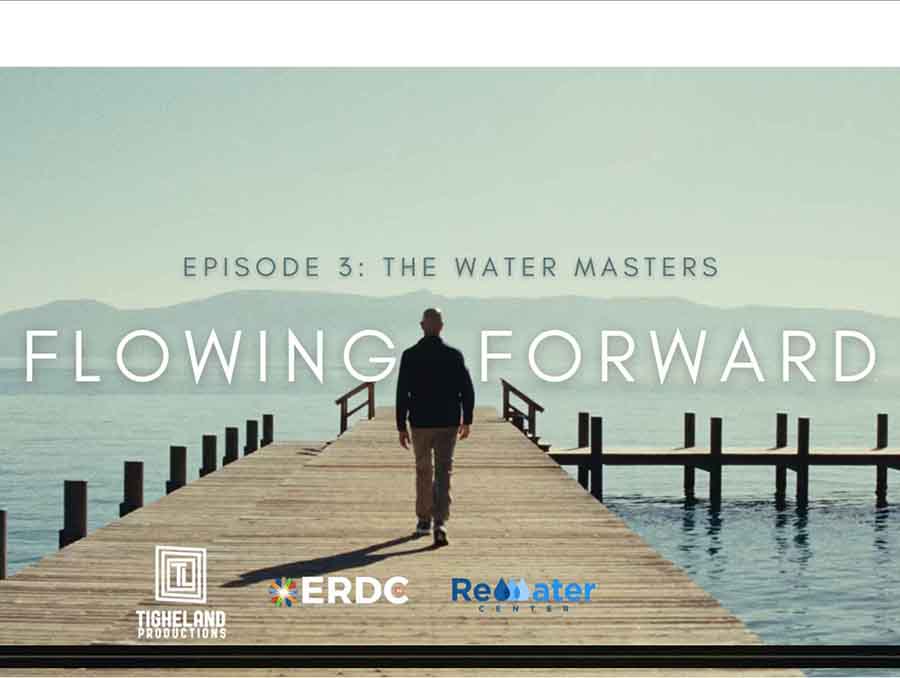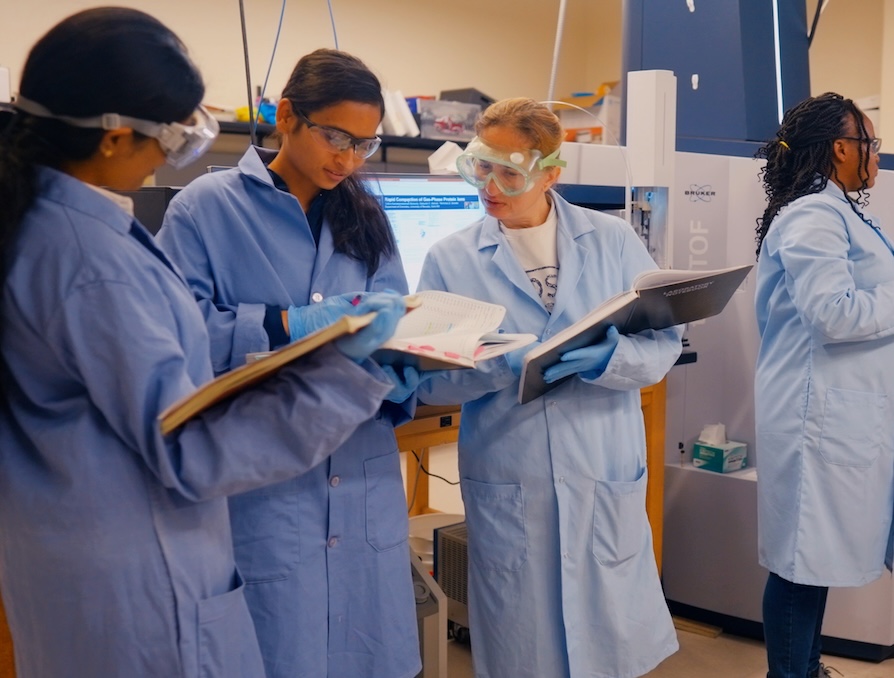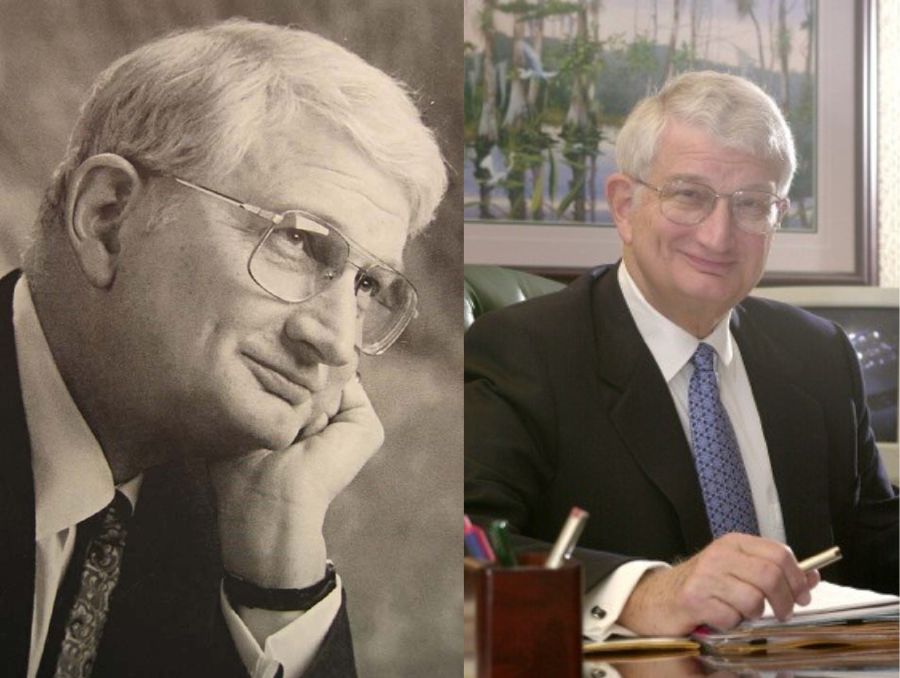The goal of becoming a Carnegie “R1” research university for the University of Nevada, Reno went from a stretch to a reality in about five years.
When President Marc Johnson first stated the goal publicly on Oct 9, 2013, during his State of the University Address, some wondered if the goal was even attainable.
To reach the classification of “R1,” or “very high research activity,” by the Carnegie Classification of Institutions of Higher Education, doctoral universities must demonstrate uncommon productivity and output in the areas of research and graduate education. Only 130 universities were included in Carnegie’s R1 latest classification, which was released in late December. Along with the University, UNLV was also included in the R1 group.
Why was it a stretch at first? It wasn’t necessarily that the University was not capable of such a goal. It was more a matter of was there enough of the University to go around. The University was still climbing out of a recessionary and budgetary hole from an economic downturn of historic proportions from 2008-2010. Many were already living professional lives predicated on doing more with less. Was the University large enough and productive enough to make such a lofty goal a reality?
Graduate School Dean David Zeh, in a recent conversation, remembered a self-study the University conducted during the timeframe when Johnson delivered his State of the University Address first enumerating the goal of Carnegie R1. It was obvious based on the study that the University needed to not only grow, but grow quickly, in areas ranging from number of faculty to teaching assistantships to student recruitment for graduate programs.
“We were pretty far off in a number of the key areas, and it looked like a significant challenge,” Zeh, also a longtime faculty member in Biology, said. Zeh quickly added, however, that solving “significant challenges” is often the mindset of a university faculty. And, that in a strange sort of way, the many obstacles the University seemed to be facing on the road to possible Carnegie R1 classification were right in line with the campus’ culture of working smarter, and better, together. “You have to have high expectations,” Zeh added. “That’s the way faculty on this campus have always operated.”
Added Johnson: “I know for some the goal might have felt like a stretch goal. But I always felt as though faculty were buying in pretty quickly. One hundred percent of the credit for reaching this classification has to go to our people. That’s how we really got here. Our people bought in, and they worked extremely hard to make sure the institution made it.”
How did the University reach R1 in five years, or as, Vice President for Research and Innovation Mridul Gautam is quick to point out, “actually four years, because from the time President Johnson delivered his State of the University in 2013, the data this is based upon is from data collected in 2017.”
Whether the journey was four years or five, the fact remains the University did something that few universities could. It was able to grow, and grow quickly, in major strategic areas. And yet there was something more afoot. The growth in the major metrics for Carnegie classification wasn’t necessarily so much about funding, resources and resultant growth data – although these are all critical areas. It was also about the sum total of a number of actions that when taken together provided the University with one of the highest achievements in its 145-year history.
“The pleasure of rooting for Goliath is that you can expect Goliath to win,” Michael Lewis, the best-selling author, wrote in his book, “Moneyball.” “The pleasure for rooting for David is that, while you don’t know what to expect, you stand at least a chance of being inspired.”
So it was for the University.
Johnson said he could feel the R1 needle moving on campus during the series of annual departmental meetings with faculty he and Provost Kevin Carman attended in the fall more than a year ago, as the 2017-18 academic year commenced. In contrast to a couple of academic years previous, there was a great deal of talk among the faculty about the R1 goal, and how the University was working to reach it.
“Kevin and I both noted there was comprehensive buy-in during those meetings,” Johnson said. “I would hear R1, the goal not only being a priority in engineering and the sciences, but in the liberal arts, in the humanities,” Johnson said. “I think people were realizing that R1 was representative of a mature, comprehensive university where all fields of academic, scholarly and research endeavor matter. We got the feeling that faculty wanted to be part of not only a quality, research university but a top-ranked, comprehensive university. They were all working toward the same goal, in the same direction, toward this big institutional aspiration that we all needed to be a part. I was really excited about what we’d heard.”
There were other signs, too, that the University was making strong, steady progress toward reaching R1.
From the day he was hired, and indeed, from the time he first interviewed for the job of Vice President of Research and Innovation in April 2013, Gautam had felt the goal of R1 was realistic.
“Let me show you something,” he said recently during an interview in his office on the second floor of Ross Hall. Gautam, in his trademark suit and tie, is an energetic presence. He moved quickly, taking three quick strides to his desk and pulled out his cover letter applying for the job back in 2013. He read aloud from the second paragraph, which said in part that in partnership with the Office of the Provost, campus deans and other key campus leaders, “the University of Nevada, Reno should aspire” to the Carnegie classification of a “research very high” institution.
“I wrote that letter in February 2013, and this was one of my very upfront goals,” Gautam said. “I felt it was possible because there were great possibilities here – we have a very productive, world-class faculty with students who are motivated to pursue excellence. You could see that there is an established record here of a very high level scholarly activity and research. When you have these elements, everything else follows.”
The numbers speak for themselves. The University has approximately 660 faculty, Gautam said. The faculty is one of the most productive in the country, with research expenditures of about $220,000 per faculty member.
In addition to faculty productivity, Carnegie looks closely at another key output – research expenditures. Again, the University has shown steady growth, totaling an estimated $145 million in 2018 compared to $87 million in 2013.
“We did this with 660 faculty,” Gautam said. “Our peers have about 1,000 or more faculty. Credit has to go back to the daily effort that our faculty and students and the people on this campus put forward, every day. For my colleagues in Research and Innovation, it’s been all about what can we do to help you, the faculty, to excel in the work that you are doing.”
Johnson noted that Gautam and his team have helped remove barriers on campus, whether it has been in providing help for new faculty in developing grant proposals, or in advocating for competitive start-up packages for faculty in key areas.
Gautam said he’s also taken a somewhat counter-intuitive approach in teasing out faculty needs.
“Whenever I meet with any faculty group on our campus, I say to them, ‘Don’t tell me what’s working. Tell me what isn’t working. Let’s work on getting what isn’t working to work. How can we be more of a service unit so that you can do your job at its highest level,’” he said.
While the research enterprise has grown, Zeh, in the Graduate School, has worked to revamp recruitment of graduate students in order to fill the doctoral degree output that Carnegie eyes very closely.
“Graduate student recruitment is changing, and I think we needed to change along with it,” Zeh said.
The effort has included “replicating some of the things that are done in undergraduate recruitment,” such as bringing more graduate study candidates to campus through initiatives such as the Gradventure program (where the Graduate School, working with graduate programs and faculty, recruits potential students through on-campus visits – so far in 2019 there are at least 14 programs participating in Gradventure recruitment days, with more programs expected to join), to developing analytics-driven Facebook campaigns as well as creating organic traffic through revitalized and user-friendly graduate program content on the web.
“We’ve found that when we bring students on campus, they’re really surprised,” said Zeh, who has been on faculty at the University since 1998. A runner, with a serious, yet somewhat whimsical nature, Zeh added with a smile that, “They usually say, ‘This is an amazing place’ … and they’re right. It is.”
Zeh said that another measure of growth – the increase of faculty over the past five years – has helped reinforce the notion that the University is an energetic place, full of possibility. Between 2014 and 2017, the University hired 167 new faculty. In addition, since 2014, the University has also increased another key ingredient – the number of teaching assistantships, which is a critical component in graduate student recruitment. There have been an impressive 141 state-funded graduate assistant lines added to University budget between 2014-15 and 2018-19.
“We’ve added a lot of young, talented faculty,” Zeh said. “We’ve made some really good hires over the past few years. In Biology, when I was department chair a few years ago, we had four positions we were searching for, and we were able to hire our top choice for each one of those positions. Four for four. That speaks to the potential people feel for this place.
“The TA lines are also another critical thing. Marc and Kevin have been very supportive in this area. But in order to realize the potential that all of this represents, you have to let people know about what you have to offer. You have to market. You have to raise awareness of what this university does, and what it can do it for a prospective graduate student.”
Relationships are also important, Zeh said. Whether it’s an online handbook that requires extra work to be placed online, or simply recognition by faculty that student success is critical to a program’s success, the university’s emphasis on the total student experience is helping keep more students in the graduate degree pipeline.
“There is an understanding that the quality of the relationships between faculty and our students is a critical piece of everything that we are trying to accomplish as a university,” Zeh said. “In general, students have come to expect universities taking a lot of the responsibility for their success. We’ve made great strides in this area over the past few years.”
The proof that the University’s graduate student numbers are growing, and helped power the University into the Carnegie classification?
Consider the fall 2018 census numbers for the Graduate School:
- Overall, 6.9% increase in graduate student enrollment over 2017
- New master’s students: up 7.6%
- Total master’s students: up 6.7%
- New doctoral students: up 29.8%
- Total doctoral students: up 13.5%
“I really thought that we were positioning ourselves to reach Carnegie R1 three years from now,” Zeh said. “When we first saw the numbers of what we needed to do, it looked pretty daunting. Now that we’re here, I think we should celebrate how far we’ve come. It’s a pretty remarkable accomplishment.”
One of the most heartening aspects of the R1 campaign has been the involvement of the humanities and liberal arts disciplines.
“It’s not just a STEM research classification,” Johnson said. “The number of humanities doctorates that come from a university are an important measure. The humanities are as much a part of gaining this classification as science and engineering. Again, it gets back to this notion of the University being a comprehensive institution. We become more attractive to students and faculty, and it becomes easier to hire new faculty and recruit students when there is strong involvement and commitment to the humanities.”
Added Zeh: “There are some programs that in the liberal arts that are doing some very exciting things. Just one example is Anthropology – it’s a department that has greatly increased its Ph.D. students, and it has a great, dynamic young faculty. I’ve always felt something like Carnegie is a classic example of rising tides raising all boats. It’s not just good for the sciences and engineering. The potential for growth is there for all programs.”
Anthropology has seen its number of Ph.D. students increase 14 percent in fall 2018. Other areas of impressive growth: the number of Ph.D. students in Political Science jumped 35.7 percent; among interdisciplinary programs, the Neuroscience Ph.D. student count increased 38.9 percent from 2017 to 2018.
Now that the University has been classified in the highest echelon of the Carnegie research classification, what’s next?
“We have to recognize that Carnegie thinks 130 universities in the country are worthy of being classified in R1 territory,” Johnson said. “We, along with UNLV, have just crossed over that line, and that’s a great thing for both of our institutions and for the state of Nevada. But this is a classification that is reconsidered every three years. Institutions have dropped in and have dropped out. It’s imperative that in the next couple of years that we solidify our position by growing our faculty that have research potential and by growing the number of students who have successfully completed doctoral programs.
“If we want to solidify our position, we don’t continue to sit on the lower edge of this classification. We deepen and we mature in these key areas.”
Gautam said an accompanying measure that could help is attaining a position among the top 100 in the National Science Foundation’s annual rankings for research expenditures. That would more than likely require the University to increase its research expenditures from the current level to about $230 million.
Another stretch goal?
Gautam smiled.
“That’s not a number. That’s about being competitive. That’s about the respect of your peers, and your place on the competitive research landscape,” Gautam said. “But with more investments in our faculty, and in our students, and in our infrastructure, I don’t think that’s an unrealistic goal. Continuing on the trajectory we are on, we are capable of it. We need to partner with industry, team up with universities and national laboratories in neighboring states to form regional consortia, form interdisciplinary research teams and centers of excellence that address our regional, state and national grand challenges, and bridge our fundamental and applied research, and continue to make discoveries with innovation and commercialization.
“We will get there; I have no doubt.”
Zeh said continued investment in TA positions, growth of graduate programs that are more multi-disciplinary in nature, an emphasis on retention to improve current graduate retention numbers of 60 percent for Ph.D. students and 78 percent for master’s students to 75 percent for Ph.D. students and above 80 percent for master’s students in the near future, as well the ongoing effort to market all graduate offerings both in person and digitally, are all a must.
“We need to also focus on career placement and career success,” Zeh said. “Given how high tech industry is really growing now in Reno, hopefully we can continue to develop these promising relationships we have with these new industries, for the benefit of our faculty, and just as importantly, our students.”
What seemed a stretch is now a reality.
What will the University’s new reality bring in the coming years?
Johnson said he is hopeful it means more achievements and more high points such as the news in December, when what seemed a far-off goal was reached. In the offing is the University’s application to become a Carnegie Engaged university. And, there are other goals that quietly contribute to the quality of the University experience, such as reducing student-to-faculty ratios, which used to be 22 to 1 and now are at 19 to 1, soon to drop to 18 to 1 if investment in new faculty positions continues, Johnson said.
“All of this is doable,” Johnson said. “And these victories are great, because everybody can feel good about the role they played in achieving them.”
That was the reason why, Johnson said, he felt elation about the news of Carnegie R1 – so many people on the campus had contributed. The long, hard road to R1 had come to mean, in a very real sense, Every1 for the University.
“It’s been very gratifying to see people adopt these ‘stretch’ goals,” Johnson said. “When you adopt stretch goals, you have to believe you can accomplish them. That’s been great to see. People have believed in them, and it’s required cohesion on the campus – not going in 15 different directions, but everyone pulling in the same direction. We’ve been consistent since 2013. We haven’t changed our goals every year. We haven’t asked people to do anything differently other than excel in our three major areas for strategic planning and the direction of the University – teaching, research and engagement.
“It goes to show what an institution can do when everyone comes together in this manner and works together for a common goal. I’m very proud of all of our people for working so diligently, and in coming together, in realizing this achievement.”














